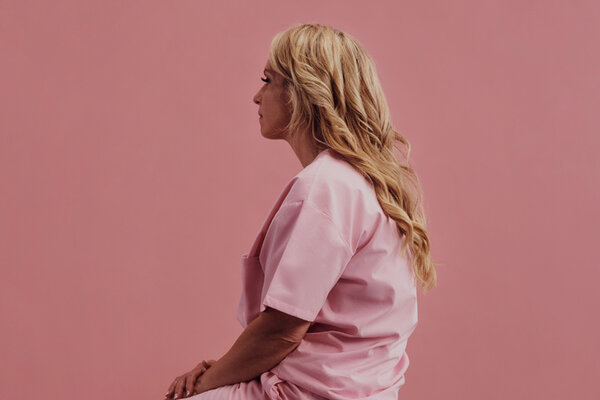Feature
How Nurses Can Steer Digital Decisions
Before investing in new technology, have the front line nurses been consulted?

Some time ago, while speaking about information technology at a conference of nursing executives, I asked the audience,“How many of you are familiar with the term ‘digital transformation?’”
Not one person raised their hand.
As I continued, people took notes and nodded in agreement with some of my points, but at the end of my talk, they had no questions. Mulling over this reaction afterwards, I realized that some of the nurse leaders didn’t know what to ask. Others may not have given the subject much thought because they didn’t view technology as something on which they should (or even could) provide leadership.
If that’s what they believed, they were wrong. Nurses are clinical leaders —whether they’re executives or caring for patients at the bedside — and their input on technology issues is absolutely essential.
Influencing decisions about digital solutions requires having a seat at the table. It also means asking the right questions.
Are nurses included in discussions about technologies that they will use?
If not, they should be. Health IT deeply impacts nurses’ work and therefore patient care, safety and experience. If a solution doesn’t fit clinical workflows, it can become a burden. Even if nurses perceive that a technology could be useful, they won’t adopt it if it creates barriers to information-gathering, colleagues or patients.
For example, if a solution requires the use of touch screens, a nurse would likely point out the potential challenges for those who wear latex gloves. Nurses can’t deliver care quickly or efficiently if they need to keep taking their gloves off and on to use a specific tool. If a technology is a hassle to use, nurses will either abandon it or be forced to find workarounds.
Nurses are ideally suited to thoughtfully inform technology discussions based on their clinical experience. They are likely to identify not only pitfalls, but also new and different ways a technology could be used in their clinical environments.
Have you started with the patient in mind?
My entry into nursing informatics was driven by the belief that patients should be at the center of all technology designed for patient care. When I was a nursing vice president at a large hospital, I had a discussion with a salesman who wanted me to look at the IV pump he was selling. I held it in my hand and explained to him, step by step and feature by feature, why it would not work for our patients. The salesman looked at me and said, “You need to be working for us.”
That’s exactly what happened: I made the decision to join Vocera, where I eventually became a vice president, leading the clinical focus on development of nurse-used technology for that company and others. By starting with the patients, I have been able to focus on translating the bedside experience into technology rather than starting with technology and forcing it onto the bedside.
What all nurses understand particularly well is the patient’s view of the world. Being sick or injured is scary; being a patient in the hospital is scary. I’ve comforted thousands of patients and their families after they’ve experienced things that made them uncomfortable. We should always bear that perspective in mind when we consider new technologies.
For example, bed alarms that warn when the patient gets up are often used to prevent falls, but a bed alarm that sounds with nobody to hear it doesn’t do any good — and unnecessary alarms may further distress or scare the patient. A patient-centered solution might be to send alarm notifications to a highly mobile nurse who could come to the patient’s aid whenever the patient needed to get up.
The solution would also allow two-way communication so that the nurse could say, “Ms. Smith, don’t get out of bed — I’ll be right there.” That way, the patient would understand what was going on, avoiding confusion, panic and yet another blaring alarm.
Are the solutions you’re considering user-friendly?
Any new technology should make clinicians’ jobs easier, not add to their already full plates. However, solutions that might be easy to use in other industries may not be so effective in a clinical setting, which is another reason why nurses’ input is so important in designing or choosing a technology.
For example, Kentucky’s Hardin Memorial Health recently deployed a smartphone app intended to improve care team communication and patient flow in the emergency department. Unfortunately, hospital leaders soon found that app usage was unexpectedly low. The problem was that ED care teams were often too busy to stop what they were doing, dig out their smartphones, log in, read their messages and respond.
In an emergency environment, clinicians need hands-free communication technology so they can exchange critical information or request help without stopping care delivery or leaving the patient bedside.
Does the solution work with your existing systems?
Healthcare transformation demands a holistic strategy. Hospitals can no longer afford to buy a disparate collection of technologies from different vendors and just hope that these solutions will work together, much less integrate with EHRs, medical devices, nurse call systems and other systems the organization may use or adopt in the future. Interoperability is a major technical challenge for software developers and engineers, but it takes a nurse to evaluate how a solution would affect clinical workflow.
If a particular solution is incompatible with other technologies nurses use every day, it will create more problems than it solves. Can a new device talk to the EHR to record readings in a patient’s chart? Is a new app compatible with the smartphones nurses use? If not, there will be trouble.
Will the solution continue to work over time?
When it comes to technology, healthcare organizations need to take into account future facility expansions, staff onboarding, the use of a solution across care settings and its potential impact on clinicians’ work and well-being. Will a solution that seems right today still be right tomorrow or a year from now? Will using it make nurses’ lives easier on an ongoing basis or will the technology just contribute to fatigue, burnout and high turnover?
Have the frontline nurses given their input?
Be sure to include the perspectives of nurses at every level of the organization in the decision- making process, early and often, to ensure staff buy-in and adoption. When nurses understand the “why” along with the “how” of a technology, they’re more likely to use it.
Earlier in my career, I was the CNO at a 1,200-bed university medical center that had been recognized as a Magnet hospital. We achieved that distinction in part by using a shared governance model: Every nursing unit of working nurses who met once a month to discuss policy, practice and products. These councils elected representatives to a hospital-wide nursing committee that made recommendations on new products that the hospital wanted to buy.
When this committee recommended a product to me, I usually approved it because I knew that the frontline nurses had vetted it. That’s how we should make all technology purchasing decisions: with the explicit input and approval of the nurses who will be the primary end users.
The digital transformation of healthcare needs the clinical expertise that you, the nurse, are best equipped to bring to the table. Work in partnership with hospital and health system IT leaders — but do not abdicate decisions about technology to them.
Recently, I attended a nurse executive symposium that discussed a familiar, hot-button topic: whether nine- or 12-hour shifts are better for reducing stress and burnout. Nurses have had this conversation for decades, but the bottom line is that long shifts are not why so many nurses feel tired and burned out. Rather, nurses are fatigued because they often lack the resources to do their jobs effectively.
To change that, we must shift the dialogue to things that will improve nurses’ working experience at every level and on every shift. Making our voices heard regarding the technology we use every day is a vital step in that process.
RHONDA COLLINS, RN, DNP, has served as a nurse, hospital executive and speaker for nearly three decades. She is currently chief nursing officer for Silicon Valley technology company Vocera Communications as well as the inspiration for the American Nurse Project.
In this Article: Medical Research, Nursing Education, Nursing Workforce, Workplace Safety






